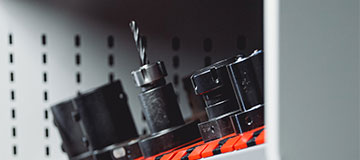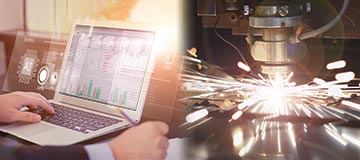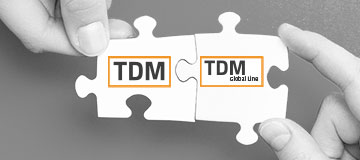The processes of the manufacturing industry can be further optimized only through an overall approach. "That is the focus of the Industry 4.0 Idea, actually a logical development of the system landscape in recent years," said Mücke. It is nothing more than the automation and networking of production systems from mechanical and electrical components. Such systems provide information in the form of a lot of data."The challenge is to prepare and use it, so that it brings economic advantages."
According to Mücke, the "Tool Data Management" plays a central role in Industry 4.0 connecting technical and business departments. In many companies today, there are two fundamental structures side by side: A technical process, realized through PDM (Product Data Management) or PLM (Product Lifecycle Management) systems, and a business management process, controlled by ERP (Enterprise Resource Planning) systems.
TDM as the Link
The Tool Data Management is networked with PLM/CAM systems or BDE/MDE/MES systems, but also to the material master and orders from the ERP system. Real-time information from the machine helps to optimize the processes of both areas even more and to reduce product and manufacturing costs.
It has long been known that about 70 percent of the product costs are already defined in the design. An example: Changing the diameter of a hole from 10 to 10.2 millimeters requires only a mouse click. However, if, the tool for the new diameter is missing in the workshop, this causes problems that interfere with the process.
By accessing appropriate tool data, the designer can already see in his CAD system whether the production of the desired hole is possible in terms of efficiency. Prerequisites are tool data with tool geometry and technical information about cutting data, production processes, as well as machine information. Thomas Mücke: "With this information, the designer can perform a preliminary calculation to evaluate the feasibility and the cost of the machining operations."
Data Flow is a Prerequisite for Industry 4.0
A seamless flow of data from the machine is a prerequisite for process optimization and savings. The large amount of data in the form of cutting data and feeds & speeds needs to be organized, controlled, and stored. Machine connectors that connect to the machine control system help this the return of, for example, the remaining tool life, machine utilization, or feeds & speeds of tools. "TDM can collect and store this data easily; it provides comprehensive benefits in various areas," explains Mücke, who goes on to give an example: The remaining tool life can be utilized for transparent crib planning.Tools are inventory-optimized and promptly ordered, which reduces storage costs and capital commitment. Real-time information on machine utilization and condition of the tools allows a flexible and prudent scheduling of production orders on the machine. The condition, use location, or crib location of the tools are taken into account. Orders can be rescheduled with short notice and produced with alternative tools, setup cost and times are reduced significantly, "the machines and the tools can do what they should: Produce!"
Putting the Focus on the Entire Customer Order
"The decisive factor is the customer order," says the TDM expert: "The faster it is ready to ship, the faster it is billed." The lead-time of a customer order should therefore be as short as possible. Bottleneck machines with material jams can cancel out any other achievements. Countermeasures can be taken through alternative operations in the work plan or in the production order.
The necessary NC programs require automated CAM programming. Automatic feature recognition in the CAM process with subsequent virtual simulation with data from TDM ensure the pace and consistent quality. The optimal scheduling of production orders on the appropriate machines and tools requires networked thinking. "For this purpose, APS (Advanced Planning Scheduling) and MES (Manufacturing Execution System) systems must be integrated."
Fast Information out of the System
A few typical examples show how this works in practice. During maintenance, the machine sends information to TDM, which is processed so that the downtime of the machine can be planned for and minimized. If an operation is moved to another machine, TDM can immediately release tools again for other jobs and thus reduce the capital lockup. With real cutting data from the machine, CAM systems can reduce the machining times and help the construction. Such information will be available in the future on all devices in real time. Since the data is always assigned to the production order, it can be tracked. Thomas Mücke's conclusion: "Networking promises significant increases in production because the machines will ultimately produce more."




